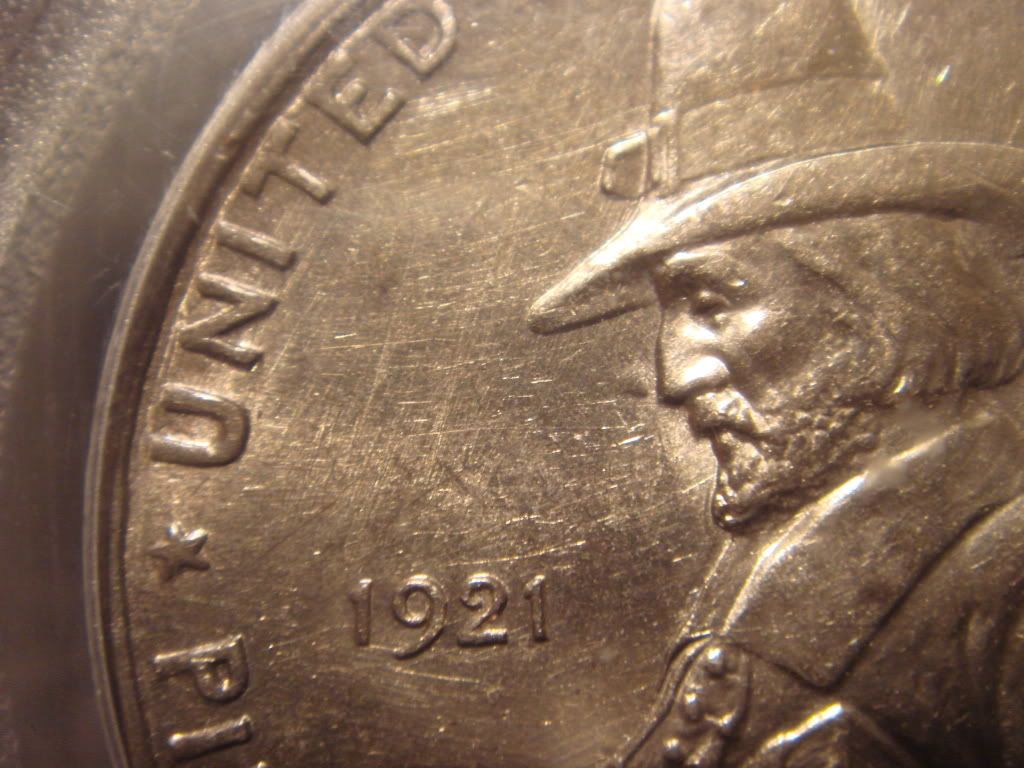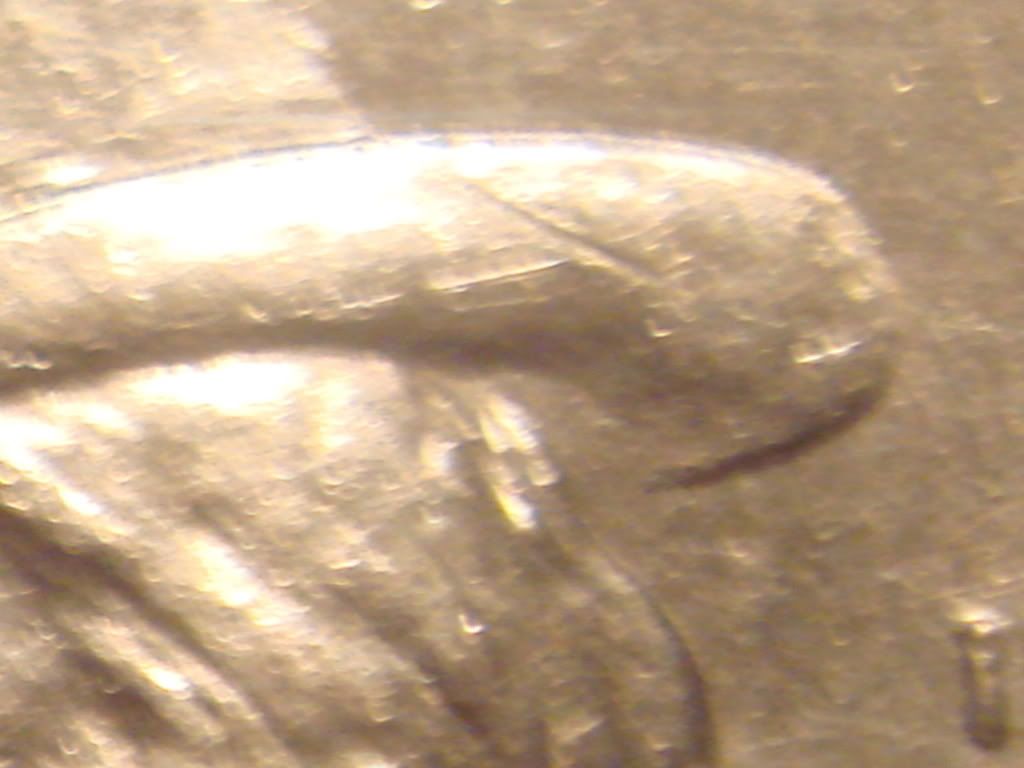Options
1921 Pilgrim "Big hat" or "State II"
I just picked up a really neat Pilgrim for my 7070 and while admiring it, I saw some clash marks--which got me to really scour the coin with a loupe--It turns out this is somewhat of a variety. I have no additional information other than a reference to "Big hat"--since die polishing made it look like the hat was too big for the pilgrims head, or also referred to as a "State II" coin--this coin has a clash in front of the nose, some other minor clashing on the obverse--and i can clearly see part of R, the entire U, a little of the S and the N of In God We Trust on the reverse.
Anyone have any additional information--one reference called this extremely scarce, but I would also like to know what board members can add.
Yes, those are die polish marks



Anyone have any additional information--one reference called this extremely scarce, but I would also like to know what board members can add.
Yes, those are die polish marks



0
Comments
TRUTH
An authorized PCGS dealer, and a contributor to the Red Book.
I have been collecting this variety for many years. Anthony Swiatek wrote about this variety in SILVER & GOLD COMMEMORATIVE COINS 1892-1989, and that is what got me started collecting the variety. This one is Variety 1 State 2, meaning it also has clashing on the reverse, right above the stern at the back, and under the E in TER, sticking out from the sail.
"While studying this issue, I discovered several 1921 half dollars that showed evidence of die clashing, and called the variety the Pilgrim 1921 Type II. My discovery concerns a lump in front of Bradford's nose, several tiny bumps behind his head above the hat brim, a raised area below the RU in TRUST and the comical hat that doesn't quite fit Bradford's head.
"Using film positives we can prove that the lumps were the result of clashed dies and the ill-fitting hat the result of die polishing, which was probably an attempt at eliminating the clash marks. Clash marks occur when a planchet fails to feed into the press and the dies hit each other without the planchet between them to absorb the blow. Consequently, the outline of the design details from each die is transferred to the other die.
"The faces of dies are normally slightly convex so that they impart a slight concavity to the field of the coins they strike. Because the dies are convex, the centers of the dies hit first and hit hardest, with the result that the design nearest the center is more subject to the die clash transfer.
"The film positives were used as overlays to show the lump in front of Bradford's nose corresponds to the area below the sail of the foremast, the tiny bumps behind the head match spaces between the waves below the center of the ship, and the raised area below RU corresponds to the curved lower edge of the sail at the Mayflower's stern. The reverse has no clash marks, possibly indicating that the reverse die had been changed after the clashing and probably because of it.
"Some 1920 Pilgrim's exist that exhibit obverse die clash marks and/or display the clash marked letters US (inverted) from the word TRUST. This too can be seen on many of the 1921 specimens, indicating this reverse die used to make the 1920 coinage was used for the 1921 coin. Using 10X magnification, the governor's index finger and collar also can be observed beneath the letters ER of TERCENTENARY and under the sail design, to the left of the rear mast, respectively.
"Possibly 100 such 1921 pieces exist, but premiums asked for the offered grade have been negligible to date. Fascination with the variety has not been overwhelming, possibly because of its infrequent appearances and lack of serious promotion. Die doubling on the reverse word PILGRIM, 1620 and the letters NARY of TERCENTENARY exist on the 1920 coin. No counterfeits have yet to surface."
(Note that Breen made no mention of this variety).
I have to disagree with the estimate of 100 pieces since I have handled 30-35 different specimens myself. I would estimate the figure to be more like 500 coins. There are various states of the clashed dies, one being coins struck immediately after the clash, whereby the dimple in front of the nose is very pronounced. The later clash strikes tend to have diminished prominence of the dimple characteristics and well as less prominent die striations from the relapping of the dies by mint workers.
TRUTH